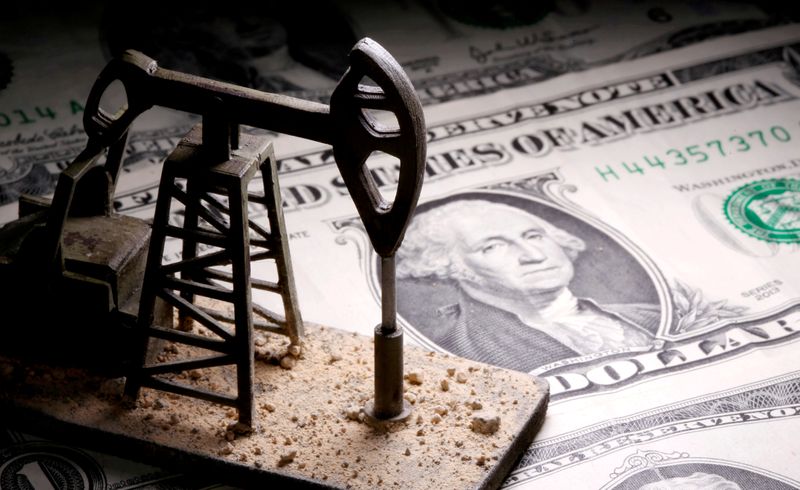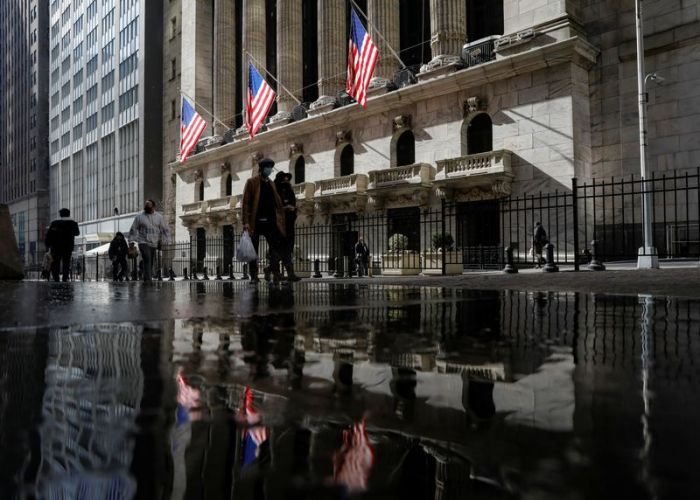NEW YORK (Reuters) – Oil prices gained more than $1 a barrel on Wednesday, as frigid Texas temperatures shut production across the largest U.S. crude producing state, with the unusually cold weather expected to hamper output for days or even weeks.
Brent crude settled at $64.34 a barrel, gaining 99 cents, or 1.6%, while U.S. West Texas Intermediate (WTI) crude settled at $61.14 a barrel, rising $1.09, or 1.8%. Both benchmarks were at their highest levels since January last year.
Oil has been supported by OPEC+ supply curbs, Saudi Arabia’s additional cuts and hopes of a demand rebound due to COVID-19 vaccinations.
Historic cold weather since the weekend in Texas, which supplies the bulk of U.S. crude and is part of the main U.S. refining hub, has propelled prices even higher.
“This has just sent us to the next level,” said Bob Yawger, director of energy futures at Mizuho in New York. “Crude oil WTI will probably max out somewhere pretty close to $65.65,” Yawger said.
The U.S. deep freeze has shut an estimated 1 million barrels a day of production and is expected to disrupt production for several days if not weeks, industry experts said, as wellheads have frozen over and pipelines have shut.
At least a fifth of U.S. refining output has been knocked offline, which is hampering demand for crude at the same time production is down, said John Kilduff, partner at Again Capital in New York.
“There’s a bit of a push-pull happening because even though the supplies are shut in, the refiners are also down so there’s not much of a call for it,” Kilduff said.
Unlike the hurricanes that can violently strike U.S. Gulf Coast oil operations, Kilduff said he doesn’t expect infrastructure damage from the freezing temperatures.
“This will all thaw out and things should ramp up rather quickly,” he said.
In a statement that helped ease fears that OPEC and allied oil producers would announce plans to raise output after meeting next month, Saudi Arabian Energy Minister Prince Abdulaziz bin Salman said it was too early to declare victory against the COVID-19 virus and oil producers must remain “extremely cautious.”
The stronger price environment has put more attention on OPEC+, which groups OPEC, Russia and allied producers. It meets to set policy on March 4.
OPEC+ sources told Reuters that the group’s producers are likely to ease curbs on supply after April given a recovery in prices.
U.S. crude oil stocks fell by 5.8 million barrels in the week to Feb. 12 to about 468 million barrels, compared with analysts’ expectations in a Reuters poll for a draw of 2.4 million barrels, American Petroleum Institute data showed.
U.S. Energy Information Administration (EIA) oil inventory data will be released Thursday respectively, delayed a day after a holiday on Monday.
Graphic: OPEC+ base case scenario – https://fingfx.thomsonreuters.com/gfx/mkt/xegpbwmqzvq/opecdeficit.png
(Additional reporting by Bozorgmehr Sharafedin in London, Sonali Paul and Shu Zhang in Singapore; Editing by Marguerita Choy, David Gregorio, Paul Simao and Jonathan Oatis)


























